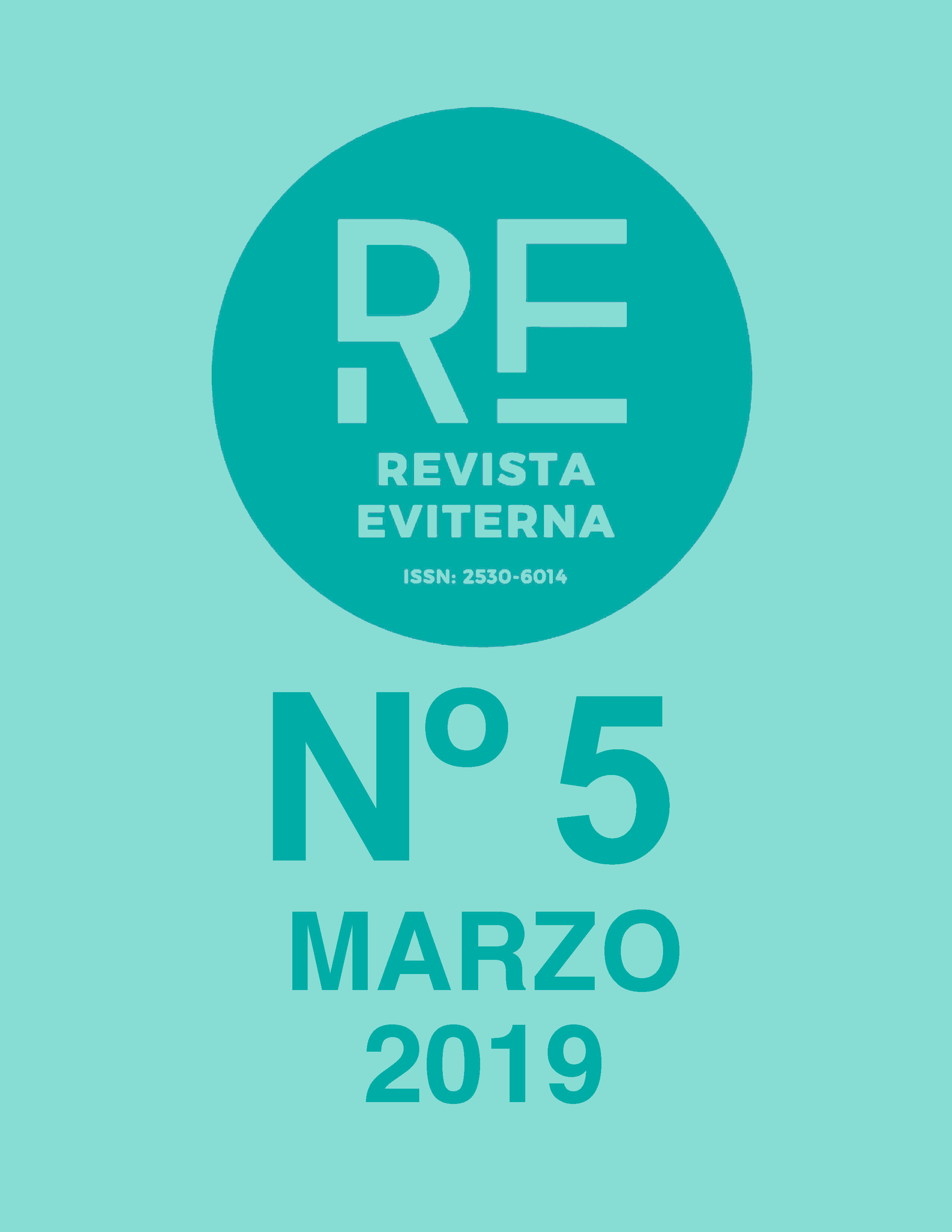Coelestis Music. The Honorius of Autun solution
DOI:
https://doi.org/10.24310/Eviternare.v0i5.8081Keywords:
Music of the spheres; eter; Middle Ages; Honorius of AutunAbstract
The theory of the music of the spheres formulates a harmonic-musical organization of the universe. Initiated in Classical Antiquity, it remained in force during the Middle Ages, constituting a central axis in the transmission of Pythagorean-Platonic thought. It was reelected over time. In these new versions an attempt was made to respond to the early Aristotelian criticism. In this paper we propose a reconstruction of the arguments of Honorius of Autun in this regard, given that they are of capital importance, while trying to establish links between the theory of the music of the spheres and the conception of the so-called fifth element: the ether. With these articulations Honorio tried to save the doctrine of the cosmic music of the observations and even rejections, based on the inaudibility of this music of the stars.
Downloads
Metrics
Publication Facts
Reviewer profiles N/A
Author statements
Indexed in
-
—
- Academic society
- N/A
- Publisher
- Universidad de Málaga
References
CALABRESE, Claudio, DOMÍNGUEZ, Carlos (2015). Honorio de Autun. Comentario sobre el Timeo de Platón. Universidad Nacional de Mar del Plata: Mar del Plata.
?
CANDEL, Martín (1996). Aristóteles. Acerca del cielo. Gredos: Madrid.
COLOMER, Luis, GIL, Begoña (1996). Arístides Quintiliano. Sobre la música. Gredos: Madrid.
CROUSE, Robert (1975). “HonoriusAugustodunensis: Disciple of Anselm?”, Analecta Anselmiana. Untersuchungen über Person und Werk Anselms von Canterbury, pp. 131-139.
ECO, Umberto (2013). Arte y belleza en la estética medieval. Sudamericana: Buenos Aires.
ESCOBAR, Ángel (1999). Cicerón. Sobre la naturaleza de los dioses. Gredos: Madrid.
FLINT, Valerie (1972). “The career of Honorius Augustodunensis. Some Fresh Evidence”, Revue Bénédictine, vol. 82, pp. 80-84.
FLINT, Valerie (1977). “The place and purpose of the Works of Honorius Augustodunensis”, Revue Bénédictine, vol. 87, pp. 97-127.
FLINT, Valerie (1982). “Honorius Augustodunensis: Imago mundi.” Edición. Archives d’histoire doctrinale et littéraire du Moyen Âge, vol.49, pp. 7–153.
FRIEDLIN, Godofredus, MATHIESEN, Thomas ([1867]-1994). Boethius, Anicius Manlius Severinus. De institutione musica. Edición electrónica en Thesavrvs Mvsicarvm Latunarvm.
GARRIDO DOMENÉ, Fuensanta (2016). Los teóricos menores de la música griega. Euclides el geómetra, Nicómaco de Gerasa y Gaudencio el Filósofo. Cerix: Barcelona.
GARRIGUES, Marie (1986). L'oeuvre d'Honorius Augustodunensis: Inventaire critique. Verlag Erich Goltze KG: Göttingen.
GOTTSCHALL, David (1992). Das ‘Elucidarium’ des HonoriusAugustodunensis: Untersuchungen zu seiner Überlieferung und Rezeptionsgeschiste imdeutschprachigen Raum. Max Niemeyer Verlag:Tübingen.
HAHM, David (1982). “The fifth element in Aristotle´s De Philosophia: a critical re-examination”, Journal of Hellenic Studies, vol. 102, pp. 60-74.
ILNITCHI, Gabriela (2002). “‘Musica Mundana’, Aristotelian Natural Philosophy and Ptolemaic Astronomy”, Early Music History, vol. 21, pp. 37-74.
KONIK, Marcin (2012). “A reception of the idea of the music of the spheres in the music theory of the twelfth and thirteenth centuries”, Musica Iagellonica, pp. 5-50.
LUCENITINI, Paolo (1974). Honorius Augustodunensis. Clavis physicae. Edición. Éd. di Storia e letteratura: Roma.
LUFF, Robert (1999). Wissensvermittlung im Europaischen Mittelalter. Gruyter: Tübingen.
LUQUE MORENO, Jesús, LÓPEZ EISMAN, Antonio (2007). Agustín. Sobre la música. Gredos: Madrid.
LUQUE, Jesús, FUENTES, Francisco, LÓPEZ, Carlos, DÍAZ, Pedro, MADRID, Mariano (2009). Boecio. Sobre el fundamento de la música. Gredos: Madrid.
MEDINA GONZÁLEZ, Alberto (2005). Cicerón. Disputaciones tusculanas. Gredos: Madrid.
MIGNE, Jean Paul (1857-1866). Patrologiae cursus completus. Series latina. Boethius, Anicius Manlius Severinus. De institutione musica. Edición. vol. LXIII. Cassiodorus Vivariensis Abbas. De Artibus ac Disciplinis Liberalium Litterarum. vol. LXX; Honorius Augustodunensis. Elucidarium Sive Dialogus De Summa Totius Christianae Theologiae; De Imagine Mundi Libri Tresvol.CLXXII. Garnier: Paris.
MINECAN, Ana (2015). “Recepción de la física de Aristóteles por Tomás de Aquino: Finitud, necesidad, vacío, unicidad del mundo y eternidad del universo”. Tesis Doctoral, Facultad de Filosofía, Universidad Complutense de Madrid. Director: R. R. Guerrero.
PETERS,Francis (1968).Aristoteles Arabus. The Oriental translations and commentaries on the Aristotelian Corpus. Brill: Leiden.
ROTH, Alfred (1939). “Kleine Beiträge zur Kenntnis des sogenannten Honorius Augustodunensis”, Studia Neophilologica, vol.12, pp. 120-135.
TATARKIEWICS, Wladysíaw (1989). Historia de la Estética. II La estética medieval. Akal: Madrid.
VILLALAZ, José (2011). Hugo de San Víctor. Didascalicon. Del arte de leer. Diecisite ed.: México.
?
Downloads
Published
How to Cite
Issue
Section
License
All the contents published in Revista Eviterna are subject to the Creative Commons Reconocimento-NoComercia-Compartirigual 4.0 license, the full text of which can be found at <http://creativecommons.org/licenses/by-nc-sa/4.0>
They may be copied, used, disseminated, transmitted and publicly exposed, provided that:
The authorship and original source of your publication (Journal, editorial and URL of the work) are cited.
They are not used for commercial purposes.
The existence and specifications of this use license are mentioned.

Copyright is of two kinds: moral rights and patrimonial rights. Moral rights are perpetual, inalienable, inalienable, inalienable, inalienable and imprescriptible prerogatives.
In accordance with copyright legislation, Revista Eviterna recognizes and respects the moral rights of the authors, as well as the ownership of the economic right, which will be transferred to the University of Malaga for dissemination in open access.
The economic rights refer to the benefits obtained by the use or disclosure of the works. Revista Eviterna is published in open access and is exclusively authorized to carry out or authorize by any means the use, distribution, disclosure, reproduction, adaptation, translation or transformation of the work.
It is the responsibility of the authors to obtain the necessary permissions of the images that are subject to copyright.







12.png)



